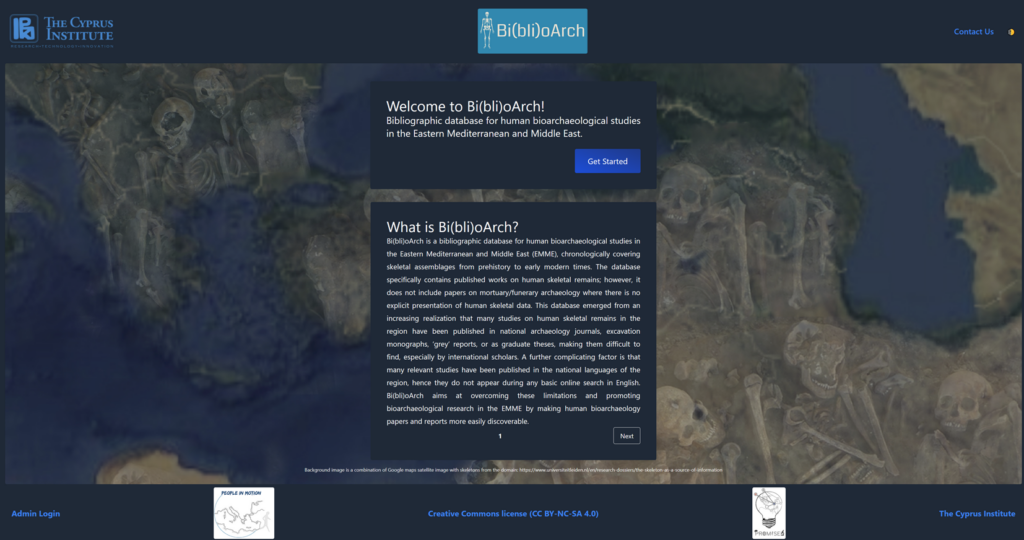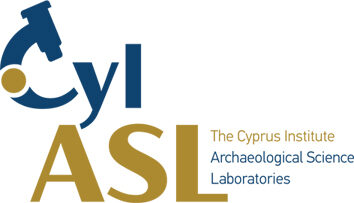
Bi(bli)oArch is an open-access bibliographic database for published works on human osteoarchaeology in the Eastern Mediterranean and Middle East (EMME), from prehistory to early modern times.
Human osteoarchaeology can elucidate important aspects of human adaptation and evolution in the EMME, but accessing the published literature has been challenging since many works have been published in national archaeology journals, excavation monographs, technical reports, or graduate theses, often in languages other than English. The Bi(bli)oArch database currently contains over 3,500 titles and associated abstracts; works that are available in languages other than English are given both in their original language but also in English. Bi(bli)oArch allows scholars to filter papers by region, theme, and year of publication, with the aspiration to promote osteoarchaeological research in the region through comparative analyses and meta-analyses. Bi(bli)oArch can be accessed here: https://www.biblioarch.com/
Bi(bli)oArch-Italia

Bi(bli)oArch-Italia is similar to Bi(bli)oArch but covers human osteoarchaeological studies in Italy. This database presently includes 1,216 titles categorized by region, theme, and chronology. Any abstracts and titles published in Italian have been additionally translated into English. Bi(bli)oArch-Italia can be accessed here: https://italia.biblioarch.com/
SrIsoMed

SrIsoMed contains published ⁸⁷Sr/⁸⁶Sr values of organic and inorganic materials from countries along the coastline of the Mediterranean Sea. Its aim is to advance palaeomobility and provenance studies in the region. SrIsoMed contains 11,436 ⁸⁷Sr/⁸⁶Sr values from 268 studies. Additionally, it reports measurement errors, sample types, sample dates, lithological information for each sampling location, and publication details. SrIsoMed can be accessed here: https://srisomed.emmebioarch.com/
AgeEst
AgeEst is a web application for skeletal age-at-death estimation employing machine learning; it has bioarchaeological and forensic anthropological implications. The machine learning models have been trained using an assemblage of 140 skeletons from the University of Athens Human Skeletal Reference Collection. AgeEst allows both the classification of individuals into broad age groups (18-34 years, 35-50 years, and 51+ years), and the estimation of biological age based on pelvic and cranial morphological changes. All code is open access so other scholars can expand it using different skeletal traits or skeletal assemblages. AgeEst can be accessed here: http://ageest.hpcf.cyi.ac.cy/
SexEst

SexEst is a web application for skeletal sex estimation using machine learning on cranial and postcranial measurements. The machine learning classifiers were trained on the William W. Howells craniometric datasets and the Goldman postcranial datasets, which include thousands of individuals from multiple geographic locations and periods. Importantly, since the training dataset is based on preindustrialised populations, this tool is suitable for archaeological assemblages. SexEst can be accessed here: http://sexest.cyi.ac.cy/
Reference collection
STARC Faunal Reference Collection

As of November 2021, STARC hosts a faunal reference collection for zooarchaeological analysis. The collection includes mammals, birds, reptiles and fish and growing fast. Please do not hesitate to get in touch if you would like to use it, either by visiting our osteoarchaeology lab or borrowing specimens for fieldwork in Cyprus. To facilitate the collection’s use, we have made its database available.

